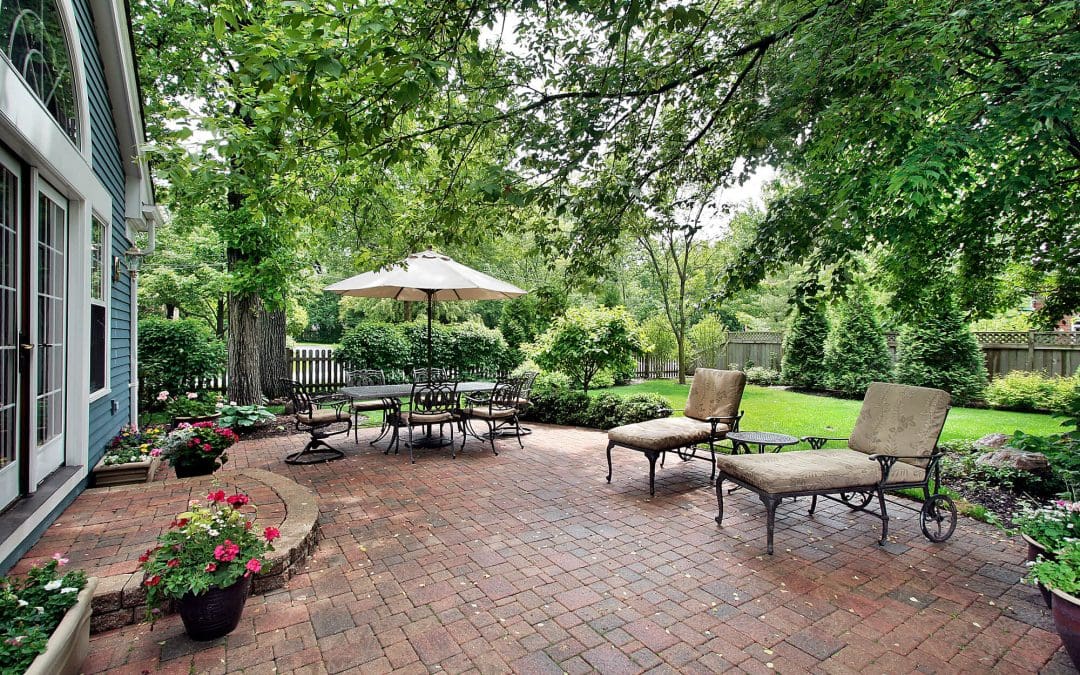Thinking about putting in a new patio or upgrading your old one? One of the biggest decisions you’ll face is what material to use. You have to think about durability, cost, maintenance, and how the space will feel underfoot. The right choice can turn your backyard into a relaxing retreat or a go-to spot for weekend hangouts. Let’s walk through some of the most common patio materials, the pros and cons of each, and how to decide what’s best for your space.
Concrete Patio Materials
Concrete is one of the most popular patio materials, and for good reason. It’s affordable, durable, and low-maintenance. You can keep it simple with a smooth, flat surface, or dress it up with stamping, staining, or exposed aggregate finishes that mimic the look of stone or brick.
Over time, concrete can crack, especially in areas with freezing winters or shifting soil. Proper installation and sealing can help reduce the risk, but it’s something to keep in mind if you live in a place with harsh weather.
Pavers
Concrete or brick pavers are small pieces set in patterns over a prepared base. They’re more expensive than plain poured concrete, but they look sharp and are easier to repair. If one cracks or gets stained, you can just replace the individual piece instead of redoing the whole patio.
Pavers come in a variety of shapes, colors, and textures, giving you lots of design flexibility. They do take more time and labor to install, so the upfront cost is usually higher. You’ll also need to keep up with some maintenance, like reapplying sand between the joints to prevent weeds or shifting.
Natural Stone
If you’re going for a high-end, timeless look, natural stone is hard to beat. Flagstone, slate, bluestone, and travertine are all popular choices for patios. Each has its own color variations and textures, which can make your patio feel unique and connected to nature.
The downside? Stone is pricey. The materials themselves cost more, and the installation can be labor-intensive. Some stones are also more porous and might require sealing to prevent stains. But if you’re willing to invest, natural stone can really elevate your outdoor space.
Gravel
Gravel is one of the most budget-friendly patio options, and it’s perfect for a casual, relaxed look. It drains well, is easy to install, and works great in areas with good weather. You can even use it as a temporary solution until you’re ready to commit to something more permanent.
Gravel does have its downsides. It can shift around underfoot, especially in high-traffic areas, and it’s not great for furniture legs or bare feet. You’ll need to keep it contained with some edging, and weeds can still pop up if you don’t put down a weed barrier.
Stamped Concrete Patio Materials
Stamped concrete offers the flexibility of regular concrete but with added flair. It’s poured like regular concrete and stamped with patterns to resemble stone, brick, or tile. It’s a great way to get the look of a more expensive material without the higher price tag.
It’s still concrete, though, so you might run into cracking over time. And while it looks nice, it doesn’t have the same texture or natural feel as real stone or brick. Regular sealing is also important to maintain its color and finish.
If you’re still unsure which material makes the most sense for your patio, think about how you want to use the space, what kind of vibe you’re going for, and how much maintenance you’re willing to take on. And if you ever need a second opinion, don’t hesitate to reach out—getting it right the first time can save you a lot of headaches down the road.
FAQs
What is the cheapest material for a patio?
Gravel is typically the least expensive option. It’s easy to install and doesn’t require much prep work, but it’s not the best for every situation.
What patio material lasts the longest?
Natural stone and properly installed pavers tend to last the longest. Concrete can also last for decades with good maintenance, but it’s more prone to cracking.
Which patio material is easiest to maintain?
Concrete and composite decking are both low-maintenance. Gravel and pavers require more regular upkeep, like re-leveling or weed control.
Can I mix materials in my patio design?
Absolutely. Mixing materials like pavers with gravel or using a stone border around a concrete patio can add visual interest and help define different areas of your yard.
Do I need to seal my patio?
Sealing isn’t always necessary, but it’s a good idea for stamped concrete, natural stone, and some pavers to protect against stains, water damage, and fading.
Elite Home Inspections offers home inspections in Louisville and the surrounding areas of Kentucky. Contact us to request an appointment.

